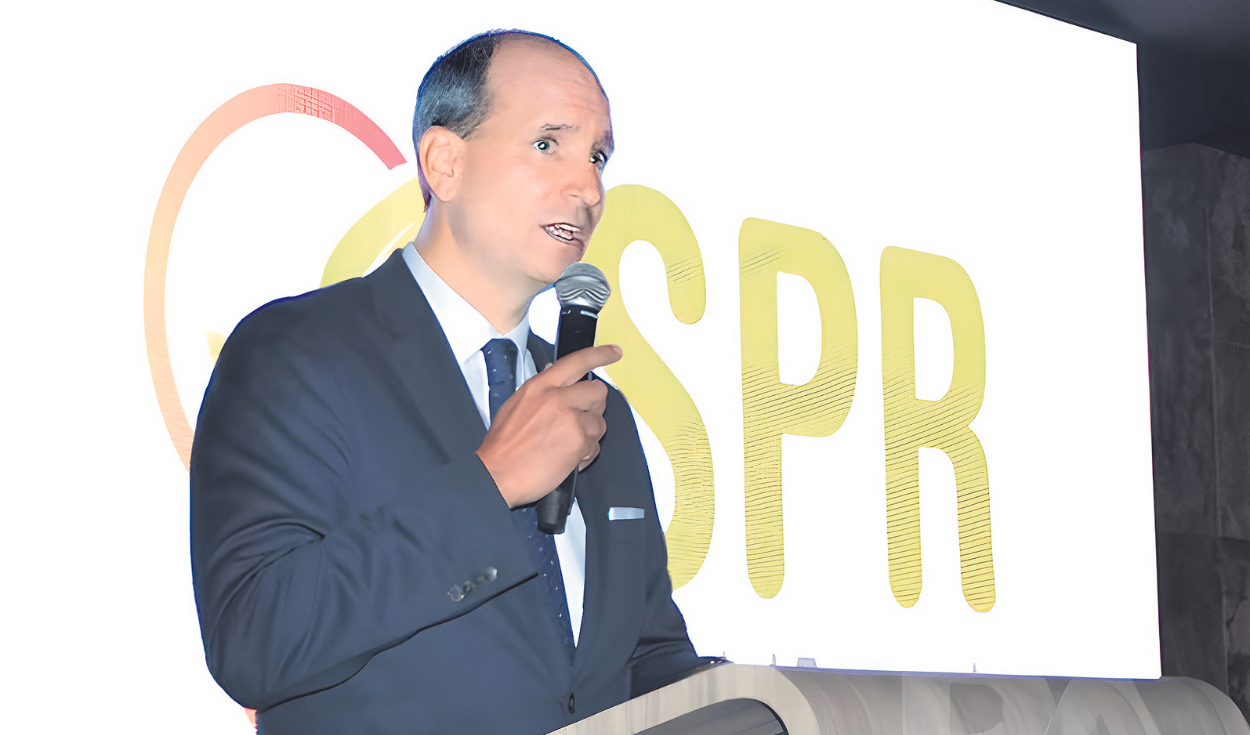
The Peruvian electrical system presents some limitations for investment in wind and solar energy. Brendan Oviedo, president of the Peruvian Renewable Energy Association (SPR), took advantage of the Solar Expo 2023 to explain the project promoted by the Executive to modify Law 28832 and balance competition.
-How are we in renewables?
-In terms of renewables, in Peru we are like a poor person sitting on a gold bench. We have many resources and some of the best in the world, but we don’t take advantage of them. We only depend on two sources, and that, for the purposes of a system that feeds a economy growing, it is very risky.
-What are those two?
-We depend on hydroelectric and thermal gas sources, in addition to 5.6% renewables last year. Now that we have water stress and the rains are not coming, in addition to the fact that it is going to occur The boy This and next year, the effect will be to restrict rainfall in the area where we have the potential for hydroelectric generation, to the center and south.
-What would be the effect?
-We would have to resort to the other resource, exclusively as a reserve, which is diesel thermal power plants. But we depend on international oil and we buy it at very high prices. This does not contribute to the climate objectives assumed by the State in terms of emissions.
-And on an economic level?
-A direct impact on contracts. If the marginal cost of burning diesel increases, generators will pay higher market prices than their contracts. Some have had to choose to resolve their agreements and pay million-dollar penalties.
-Doesn’t expensive energy also affect new investments?
-Anyway. It will generate a higher cost for any new mining project that enters to seek a contract. The operating costs of these industries They can depend 60% or 80% on electricity.
-That does scare away capital…
-In the investment analysis, if the majority consumption is energy, security of supply is needed. We try to transfer a competition to a regional level: if in Chile the cost of producing a ton of copper is cheaper than in Peru, the investment goes there. You have to define how much is cost efficient and have a safe system that does not turn off and with sufficient sources to not depend on diesel.
-And at the domestic level?
-Climate change will affect the pockets of Peruvians directly or indirectly in the medium and short term. As citizens, we must demand that politicians take measures so that the electrical system—an inelastic demand is not going to stop consuming—is prepared. This project will benefit more than 32 million Peruvians: providing security to the system and diversifying with decentralized sources to the north and south will generate a significant reduction in the prices that families pay.
-Is Minem conscious?
-They promote the decentralization and diversification of sources, but their hands are tied because they require not only regulatory, but also normative changes, which do not depend on them, but on the Congress.
-That is why the Executive presents its bill.
-Minem seeks to open the market to wind and solar energy to lower rates. There will always be opposition to competition and that is why it is important that the State makes its objectives clear. The result? More energy sources, a robust system that strengthens the economy, and efficient projects that enter the system with low prices.
-How much lower?
-Currently, according to current contracts, the average generation cost for the regulated market (domestic use and businesses that are not part of the free market) is US$70 MWh. Generation represents 50% of the rate that people pay. The wind generation and solar have prices between US$35-US$45 and US$25-US$35, respectively. At a lower generation price, it is possible to achieve cheaper rates for everyone.
-How do you plan to achieve it?
-Minem proposes changing the bidding structure of distributors, creating time blocks. Let me explain: if I am solar, in a tender you tell me: ‘how do I get your best price?’. Well, I will get it if they allow me to submit an offer when I can operate, when there is sun. But if they force me to present an offer at night, I must look for someone else to sell me that energy, more expensive.
-And investments fall.
-Clear. How do I, being solar, finance a project? I need a future supply contract, someone to pay for the electricity what gender. I can offer my generation capacity—my energy—but I can’t sell if I don’t have power. Then, the State changes the structure of the tenders, separates power and energy, and establishes a block to launch my best price.
-How is the project going?
-It was already approved in the Energy and Mines Commission, and now it is in Economy, which must be inhibited, to go to Plenary.
-Do you, the renewables, have anything against the regulated price of natural gas?
-Nothing, it is a campaign that seeks to confront.
Source: Larepublica
Alia is a professional author and journalist, working at 247 news agency. She writes on various topics from economy news to general interest pieces, providing readers with relevant and informative content. With years of experience, she brings a unique perspective and in-depth analysis to her work.












